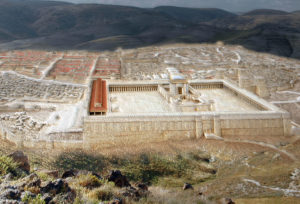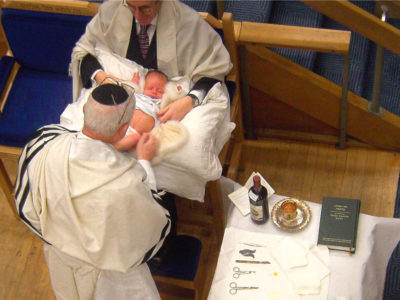IS IT MUTILATION and painful as all get out?
That’s pretty much the Bible Question of the Week.
It’s similar to a question I dealt with in March: “Ouch. Why did God order circumcision?”
Here’s a shortened version of the question, from Pam Lane. She says she has been discussing the topic with her son.
“He says that ANY form of this practice is very painful and mutilation. I do not agree. Is the Brit Milah type very mild and no anesthetic?”
“Brit Milah” is the Jewish term for the ritual of circumcision. The phrase means “covenant of circumcision.” Jews who follow their ancient tradition circumcise their baby boys on the eighth day of the child’s life, as the Bible says they have been instructed to do since the time of Abraham, some 4,000 years ago:
“Every male among you must be circumcised. Cut away your foreskin to show that you are prepared to follow the agreement between me and you. From now on when a baby boy is eight days old, you will circumcise him” (Genesis 17:10-12).
I have never witnessed a Jewish ritual of circumcision.
So I can’t say I’ve ever heard a Jewish boy cry out, “Oy vey, that smarts.” Or cry out anything else, for that matter. But I would bet a few shekels they generally cry out something.
Rabbi Moshe Shulman serves a Jewish community in St. Louis as a certified Mohel, the tag given to a rabbi who performs the surgical procedure. On his website, milah.net, he answers a lot of common questions about circumcision.
Here’s how he explains the procedure, though I’ve added a few notes in brackets:
“The procedure involved in Brit Milah differs from medical circumcision in that heavy clamping or other interventional instruments are forbidden. The Mohel (ritual circumciser) uses a protective shield to ensure the utmost safety for the child [it protects the head of the penis from getting cut], and then cleanses the incision through a uniquely Jewish practice called m’tzitzah [suctioning of blood from the wound].
“The procedure is extremely quick, and relatively painless. According to most Rabbinic authorities [ancient Bible commentary from rabbis], Jewish law does allow the use of a topical anesthetic cream….Some Mohalim (ritual circumcisers), including myself, use this anesthetic cream routinely, with the approval of the family’s personal physician or pediatrician.”
About Pam’s question of whether or not circumcision is mutilation, that seems like a cultural call as far as some folks are concerned. In our culture at the moment I doubt most folks would call it mutilation to wear tattoos, pierced ears, or ear plugs that stretch the earlobes—though I personally have an aversion to extra holes in my body, with or without ink.
Circumcision was common throughout the ancient Middle East. The oldest evidence goes back to Egypt, before the Jews became a nation.
The practice started dying out after Alex the Great conquered the Middle East and brought his Greek culture with him. Some Greek athletes competed in the buff. And many Greeks seemed to think men were totally naked—and doggone disgusting in public—when their little head made an appearance.
Sorry folks, I didn’t know how else to say that. The scholarly version seems too clinical: “when the prepuce is retracted.” For most readers, I suspect, that tech phrase simply does not create the visual image necessary to understand what’s going on.
And now that we understand, we might better appreciate the old saying “Ignorance is bliss.”
Mazal Tov.





Leave a Reply